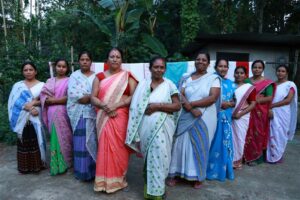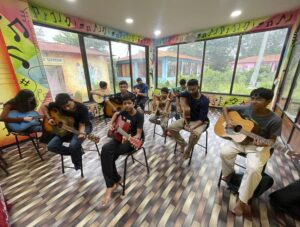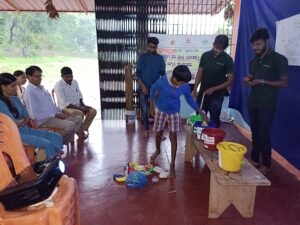“Elsa … Elsa!” calls out Dr Prakash Amte, sliding open the gate to her den. At the sound of his voice, a five-year-old leopard pounces out, eyes shining, powerful muscles rippling under her gleaming fur, a deep, low purr rumbling from her chest. Next, we move to Jasper, a 15-year-old striped hyena, who cackles excitedly as Amte scratches his head and extends his arm for a playful tug-of-war. Jasper soon shuffles to a shaded corner, offended by the drizzling rain.
Then, it’s over to Raja and Rani, two 40-year-old marsh crocodiles, and finally Soma, one of six Indian sloth bears, who hooks her claws around Amte’s hand, holding it in place while she gobbles up a treat of roti and honey.
These are among the 115 animals across 24 species living in Amte’s Animal Ark in Hemalkasa, a village deep in the jungles of Gadchiroli, near the Maharastra–Chhattisgarh border. A wildlife orphanage, the Ark was founded by Amte and his wife Dr Mandakini Amte in 1974 to raise orphaned baby animals rescued from the surrounding Dandakaranya forest. Since then, many animals have lived under their care, sharing an incredible bond with their ‘parents’.
The first to arrive was Babli, a rhesus monkey, whose mother was killed by a hunting party of the Madia Gond, an indigenous tribal community, which, at the time, depended solely on hunting for food. Babli was suckling on her dead mother when Amte intervened, offering food in exchange for the baby. The Madia agreed and continued to bring lost or orphaned animals to Amte whenever they found one.
The previous year had seen Amte’s father, the famed social worker Murlidhar Devidas Amte (aka Baba Amte) lay the foundation of Lok Biradari Prakalp (LBP) to educate and empower the Madia Gond people.
“At first, we had no idea how to care for wildlife,” recalls Amte. With no background in veterinary sciences, Amte relied on his medical knowledge and observation. Today, the Ark has a full-time vet. Amte’s work with the Madia has inspired them to cultivate the land and rely less on hunting.
At first, the authorities objected. “They have seen for themselves how well the animals are cared for, and that I’ve complied with regulations. Now they have asked us to expand the enclosures. It’s a Rs 10-crore project, and we are in the process of fundraising. I’ve earmarked 10 acres of land and built the mandatory two-metre-high compound wall. The plans have been sent for approval,” he explains.
Watching Amte hugging his three-year-old granddaughter Rumani, chatting with his wife in his tranquil front yard or murmur quick instructions to Sachin Mukkawar, his key co-ordinator, you would think he is an average village elder. But this outstanding, yet ever-humble man in well-worn, white drawstring shorts and simple, sleeveless vest is the recipient of close to 30 prestigious awards including the Padma Shri, the Ramon Magsaysay Award for community leadership, the Venu Menon National Animal Award for lifetime achievement and the Rajiv Gandhi Award for wildlife conservation.
While Amte currently focuses on spreading awareness and interacting with the public (he is regularly invited by esteemed educational institutions, and other forums for lectures), his children now take care of the LBP operations. Elder son Digant and his wife Anagha, both doctors, run the hospital, while the younger Aniket heads administration and his wife Samiksha runs the education vertical.
While the tireless efforts of three generations of Amtes have brought LBP far, their work is by no means complete. Water conservation, skill development for the livelihoods of youngsters, and a new school in the deep interiors for Madia children up to 11 years old are all ongoing efforts.
The story has been extracted by: https://www.readersdigest.in/features/story-extraordinary-indians-124790





